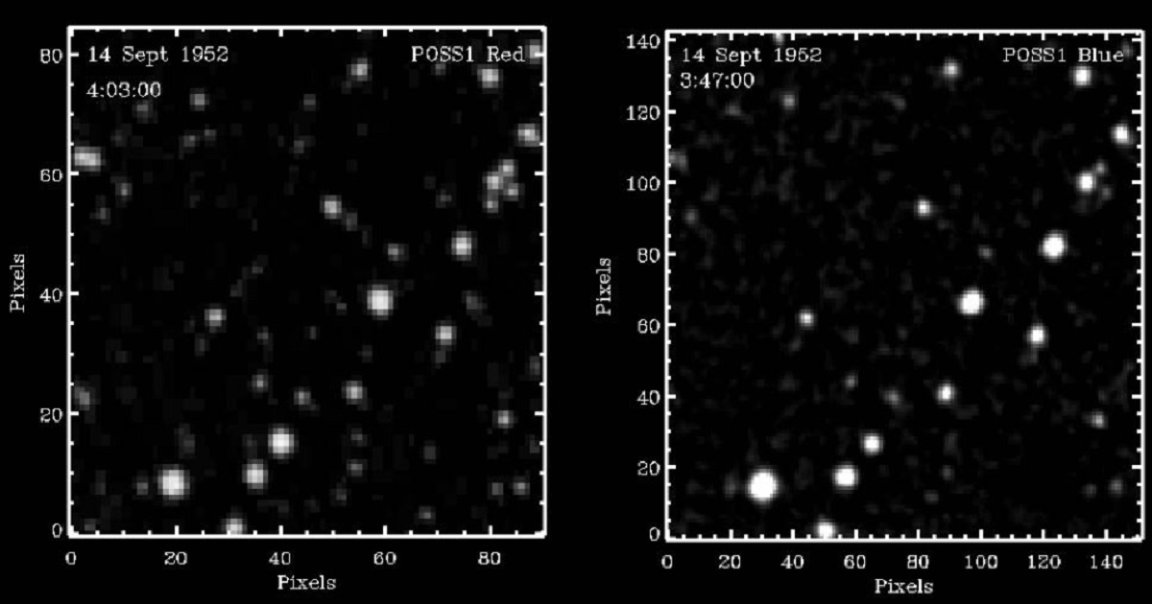
Vanishing Act
More than 70 years ago, astronomers were doing a photographic survey of the night sky when something odd happened: three bright stars vanished between shots, never to be seen again.
As Universe Today flagged in a recent blog, a not-yet-peer-reviewed study by an international group of researchers has offered new potential explanations to the 1952 mystery, when astronomers at Caltech’s Palomar Observatory found the bizarre and still-unexplained astral anomaly.
Here’s how it went down: on July 19, 1952, Palomar was taking photos of the night sky at multiple points to get shots of things like asteroids. At 8:52pm that night, it captured an image that featured a cluster of three “star-like” points of light that were as bright as the stars surrounding it, leading to the assumption that they were, you know, stars.
But by 9:45pm that same night, when the observatory captured another photo of the same portion of the sky where the cluster had been seen less than an hour before, the “stars” were gone — and although people keep looking, they’ve never seen spotted again.
Theoretical Astronomy
The prevailing assumption in the intervening decades has been that the stars suddenly dimmed for some as-yet-unknown reason, going from a brightness magnitude of 15 to one so low that it could not be detected by the observatory. In subsequent years, Universe Today points out, more sensitive telescopes have looked for them again and still not found them, deepening the mystery.
Flash-forward to 2023. While astronomers still don’t know why the stars vanished — or indeed, if they were even stars at all — this new research posits three potential explanations: that they were a single star magnified into three, that they were a different kind of stellar object, or that they had been vestiges of something Earthbound, such as nuclear testing dust.
The first theory would rely on the extraordinary happenstance of capturing a rare stellar event, like a fast radio burst from a magnetar neutron star, at just the right second. If the ensuing black hole occurred between the exploding star and us, it could, the researchers suggest, refract its light back to us into three points of light that would have looked like three stars to a 1950s observatory telescope.
The other options — that they were the result of some strange sign of something closer to Earth, like the hypothesized comet-producing Oort Cloud region of our Solar System in space, or that they could have been specs of radioactive dust from the nearby nuclear test sites in New Mexico during that decade — seem somewhat more likely, though when it comes to those bizarre things humans capture on their sensitive stargazing instruments, stranger things certainly have happened.
More on telescopic weirdness: James Webb Spots Numerous Pairs of Planets, Hanging Out With No Stars